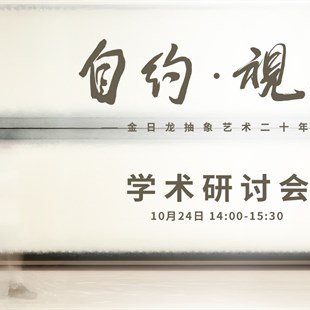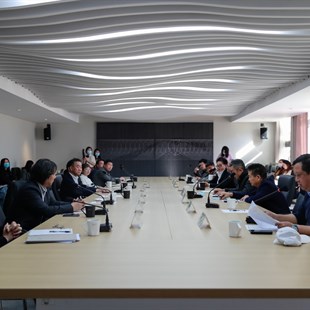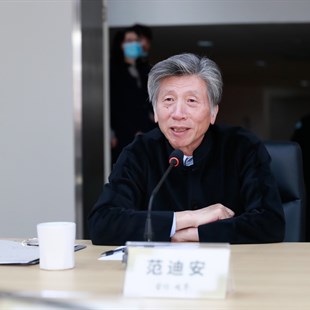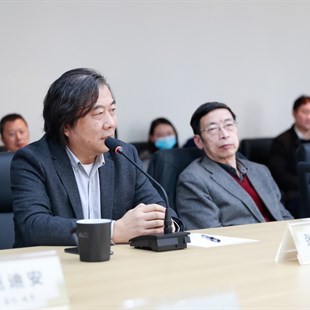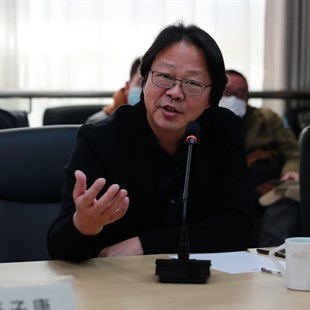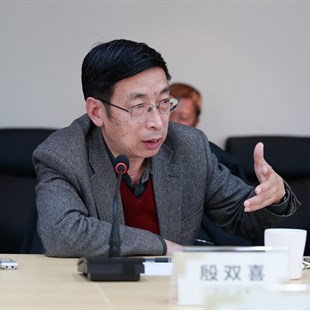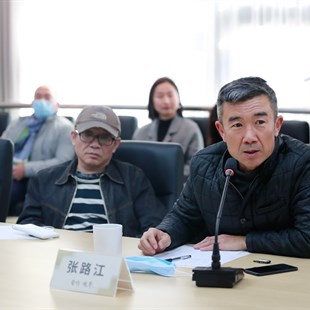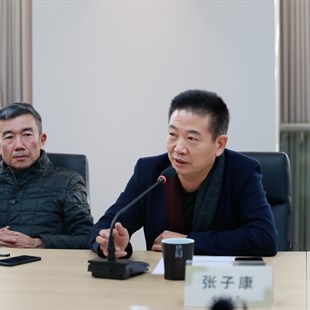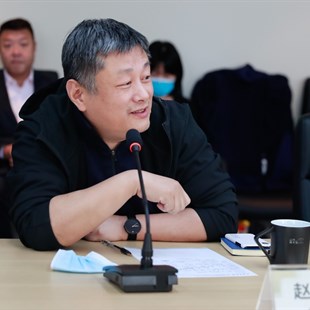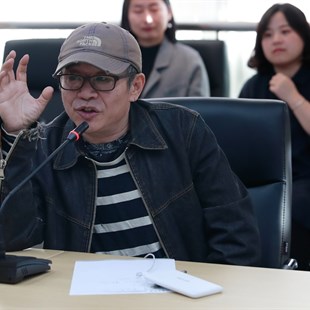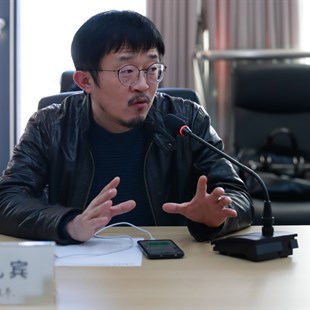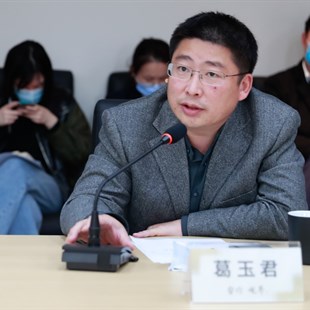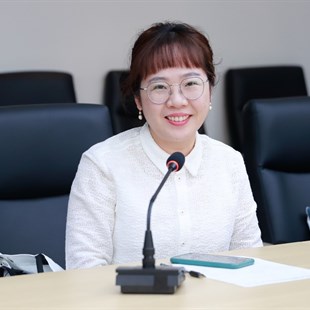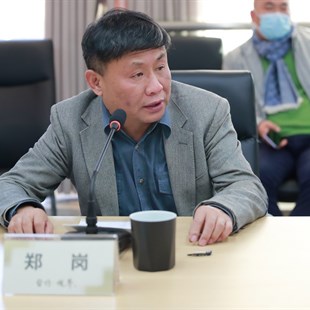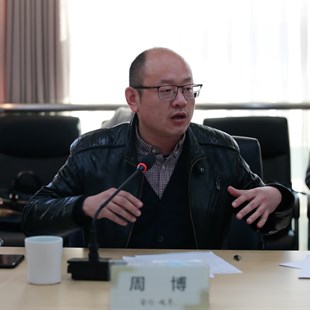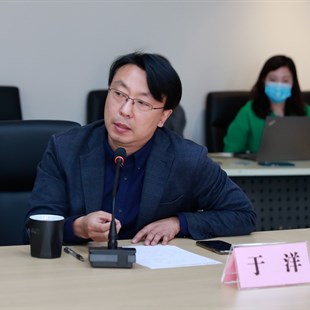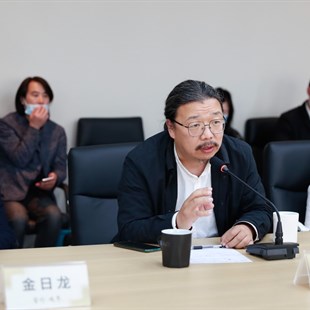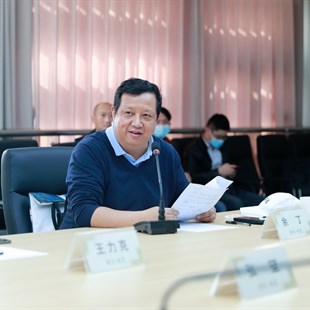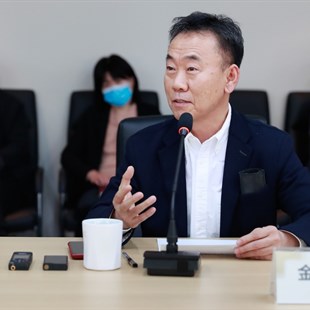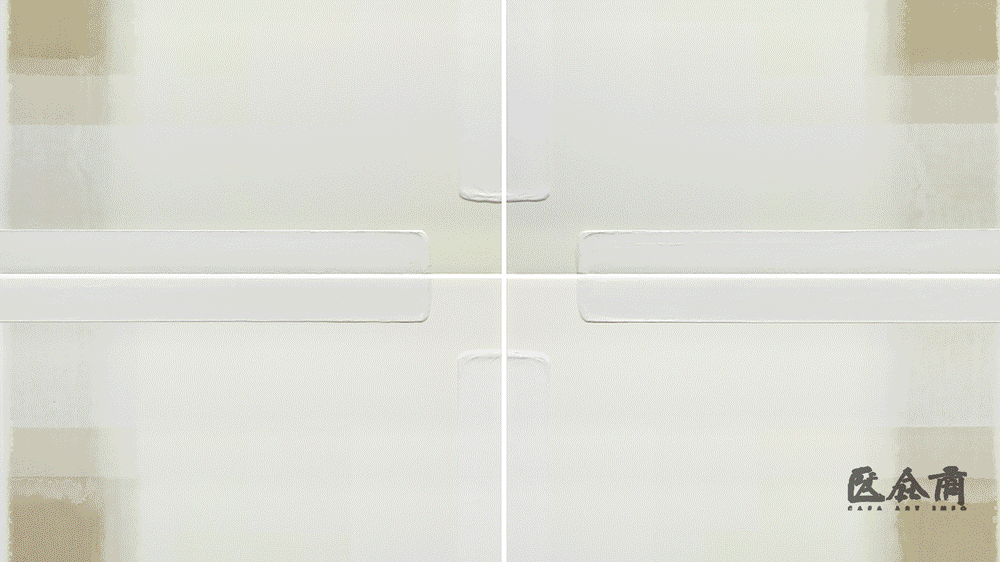
Exhibition View of “SELF-RESTRAINT & HORIZON: Twenty Years of Jin Rilong’s Abstract Art”
On October 24, 2020, hosted by the China Artists Association and the Central Academy of Fine Arts and co-organized by the Shandong Art Museum, Shandong Artists Association, and the Department of Oil Painting at the Central Academy of Fine Arts, Professor Jin Rilong’s solo exhibition “SELF-RESTRAINT & HORIZON: Twenty Years of Jin Rilong’s Abstract Art”, opened at Shandong Art Museum. The exhibition was chaired by the academic Fan Di’an, Chairman of the China Artists Association and President of Central Academy of Fine Arts, with Hongmei, an associate professor of Central Academy of Fine Arts, serving as the curator.
Jin Rilong is an outstanding Chinese-Korean artist from Yanbian, Jilin. In 1982, he won the First National Minority Art Works Gold Award for his work “Grandma” reflecting the lives of ethnic minorities. His work attracted the attention of Jiang Feng, President of the Central Academy of Fine Arts. In September of that year, he enrolled in the Department of Oil Painting at Central Academy of Fine Arts and embarked on a fantastic artistic career. From 1996 through to 2005, he successively obtained a master’s degree and a doctorate degree from Seoul National University and Hongik University, the most renowned universities in South Korea. In 2006, he returned to China after completing his studies and was called by his alma mater to teach at the School of Design, Central Academy of Fine Arts. Although he has spent more than 20 years in design creation and teaching, his love for the art of painting has not disappeared at all and it has further promoted his related research on graphic painting and design art, thus making his art take a distinctive tortuous path with rich achievements. (You may also visit the VR online exhibition by clicking https://720yun.com/t/0bvkOb7m52h?scene_id=58311051. )
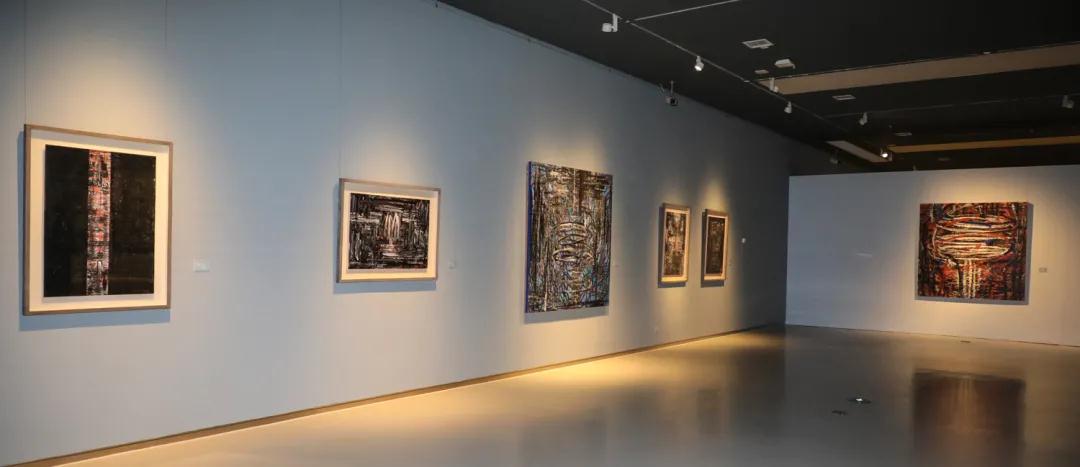
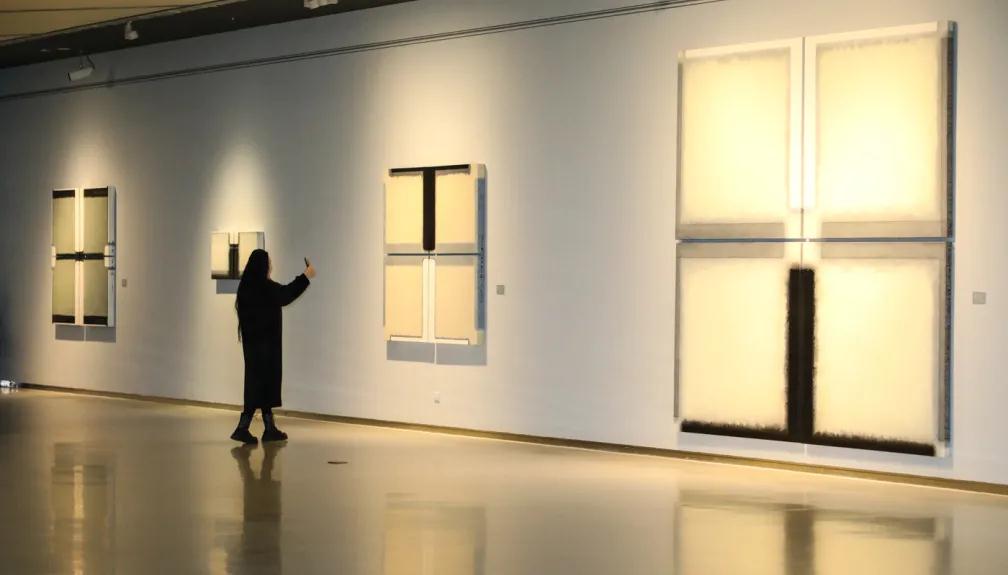
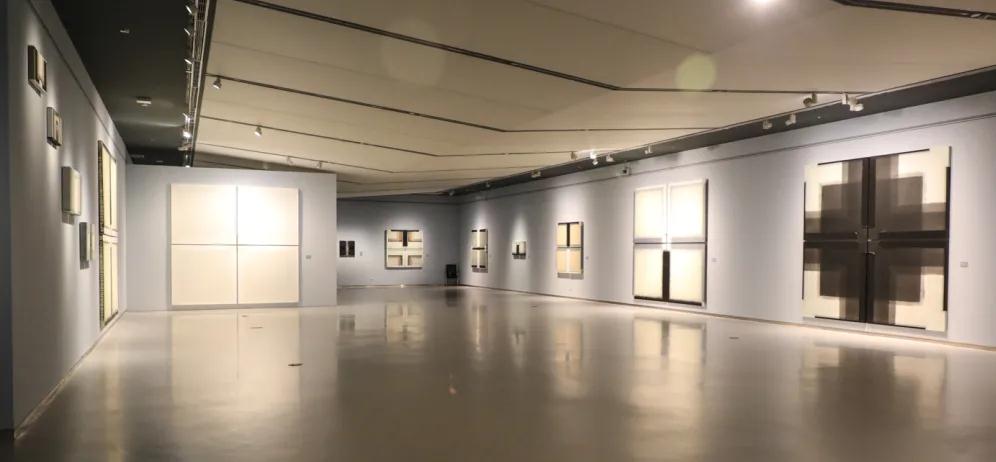
Exhibition View of “SELF-RESTRAINT & HORIZON: Twenty Years of Jin Rilong’s Abstract Art”
In Jin Rilong’s nearly 40 years of artistic experience, his creations span different artistic fields such as Gongbi (meticulous brushwork), figurative, abstract, installation, video and design, full of endless “changes.” The “alternation” of his personal research and creative experience has enabled him to make achievements in many fields, fully reflecting the experience of “change”, and constantly conforming to the epochal trends. The changes in his painting from realistic modeling and design to abstract expression are more obvious. His developments in art not just enable us to find the influence of the changing world on an artist, but they also convey the mental process of his transfer to multiple fields and eventually his artistic outlook.
The exhibition is divided into four sections: “Eve before the Upheaval” (1996-1998)”, “Seeing the Image of Mind (2016-2017)”, “Reconstructing the Image (2018)” and “Self-restraint Horizon (2019-2020)”. More than 70 works have been selected from his abstract art research and exploration in the past 25 years.
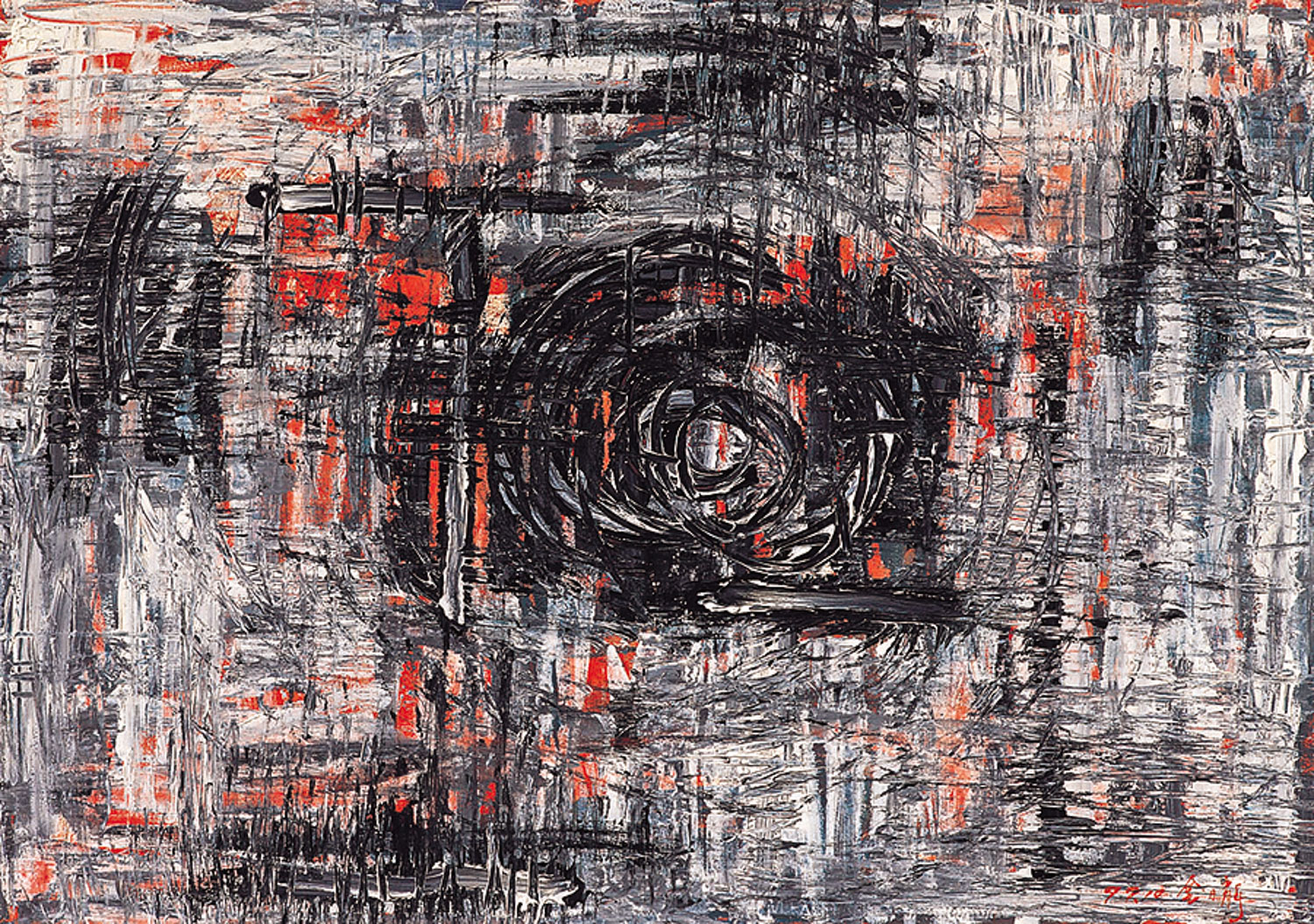
Jin Rilong, Night Walk, Acrylic on paper, 70×100cm, 1997
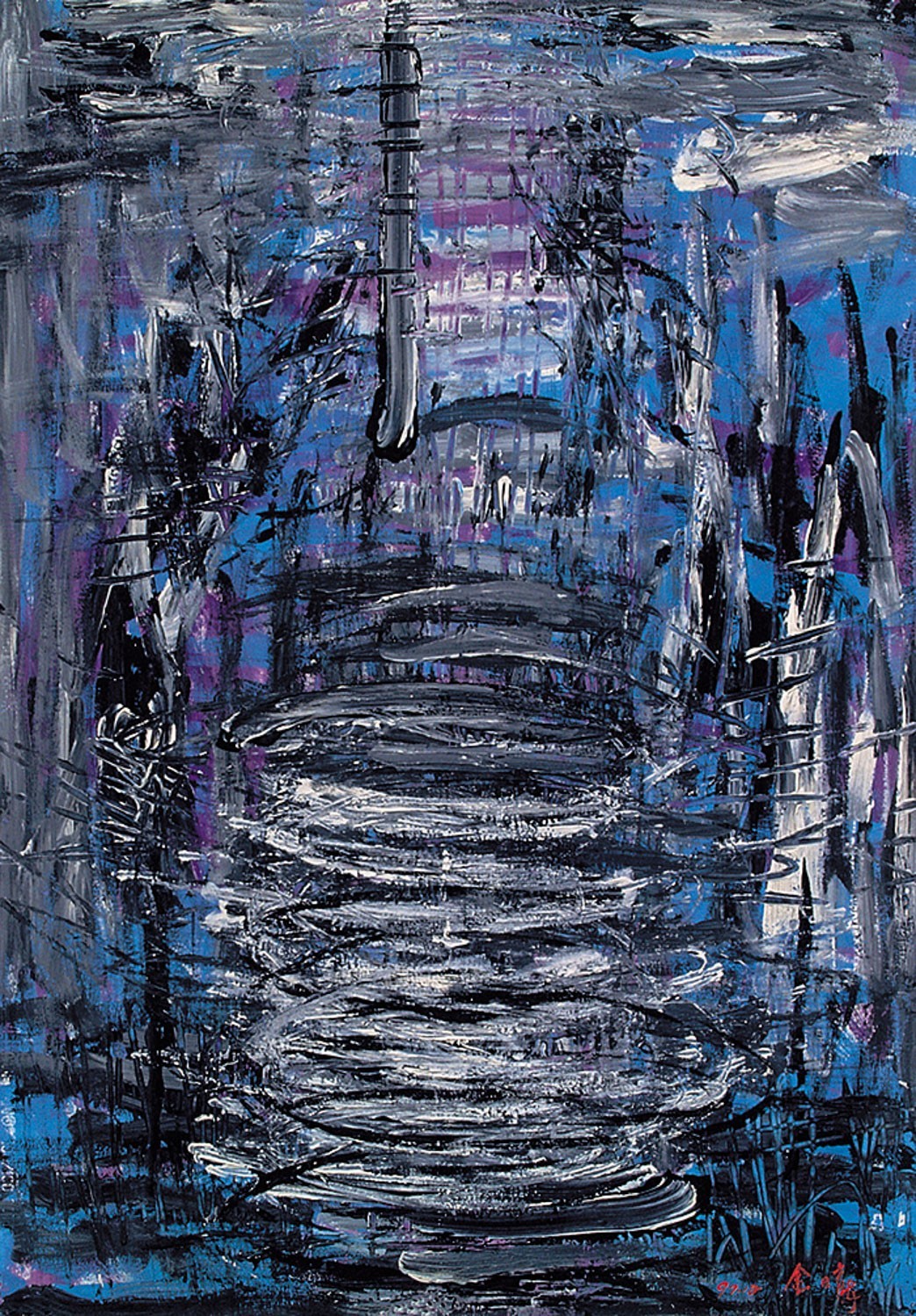
Jin Rilong, Alone, Acrylic on paper, 100×70cm, 1997
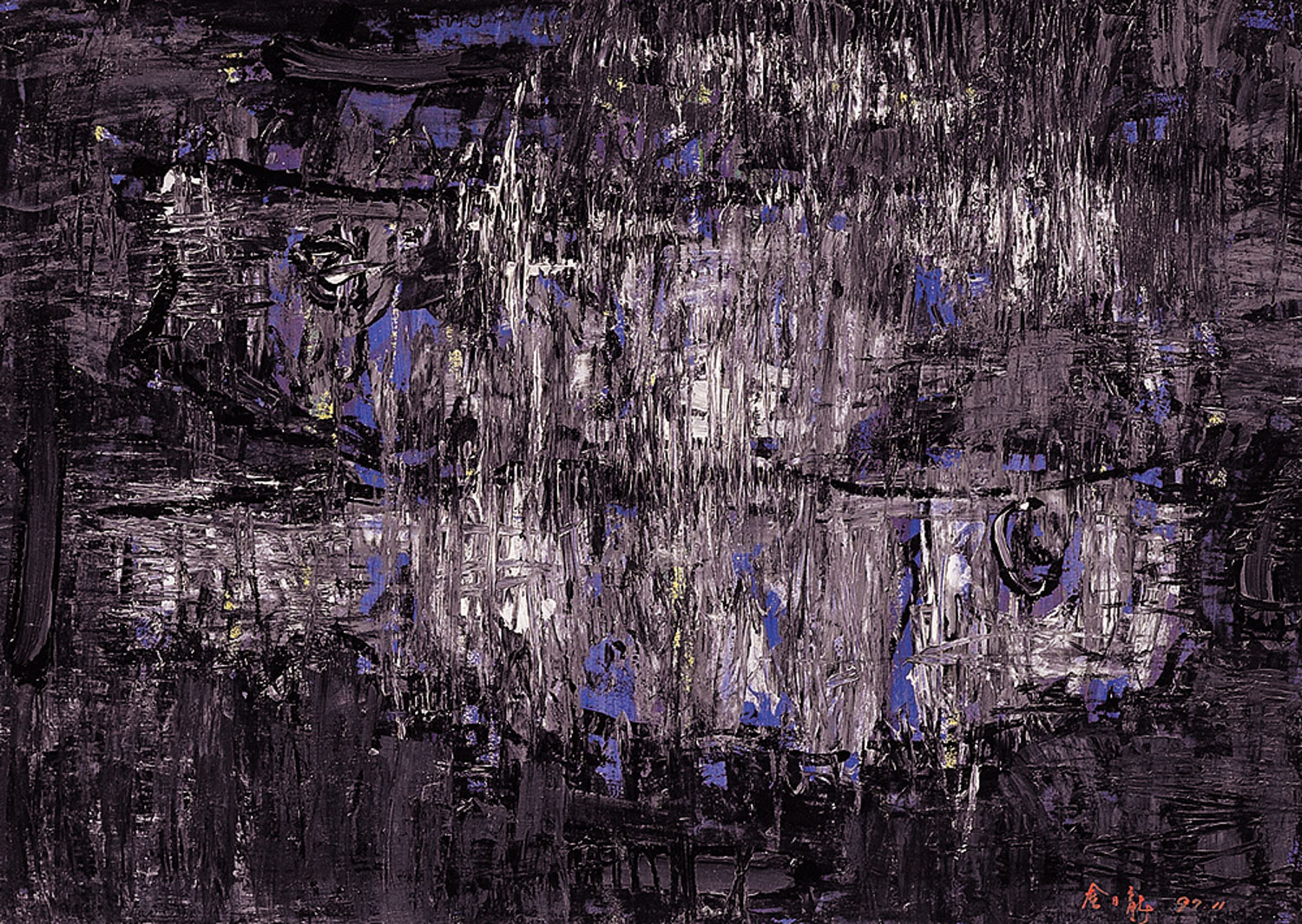
Jin Rilong, Order, Acrylic on paper, 70×100cm, 1997The “Eve before the Upheaval” section includes a series of graduation creations made by Jin Rilong when he was studying in the Graduate School of Seoul University in South Korea. During the three years of his master’s degree, Jin Rilong specialized in abstract art, under the tutelage of the famous Korean abstract artist Ha Dong Chul, and received his initial professional training in abstract art. During this period, Jin Rilong was in a transition from concrete realism to abstraction. Not only the shadow of realistic narratives can be seen from the title, such as “Night Walk”, “Alone”, “Order”, “Memory”, etc., there are also factors that cause the audience to have concrete associations.
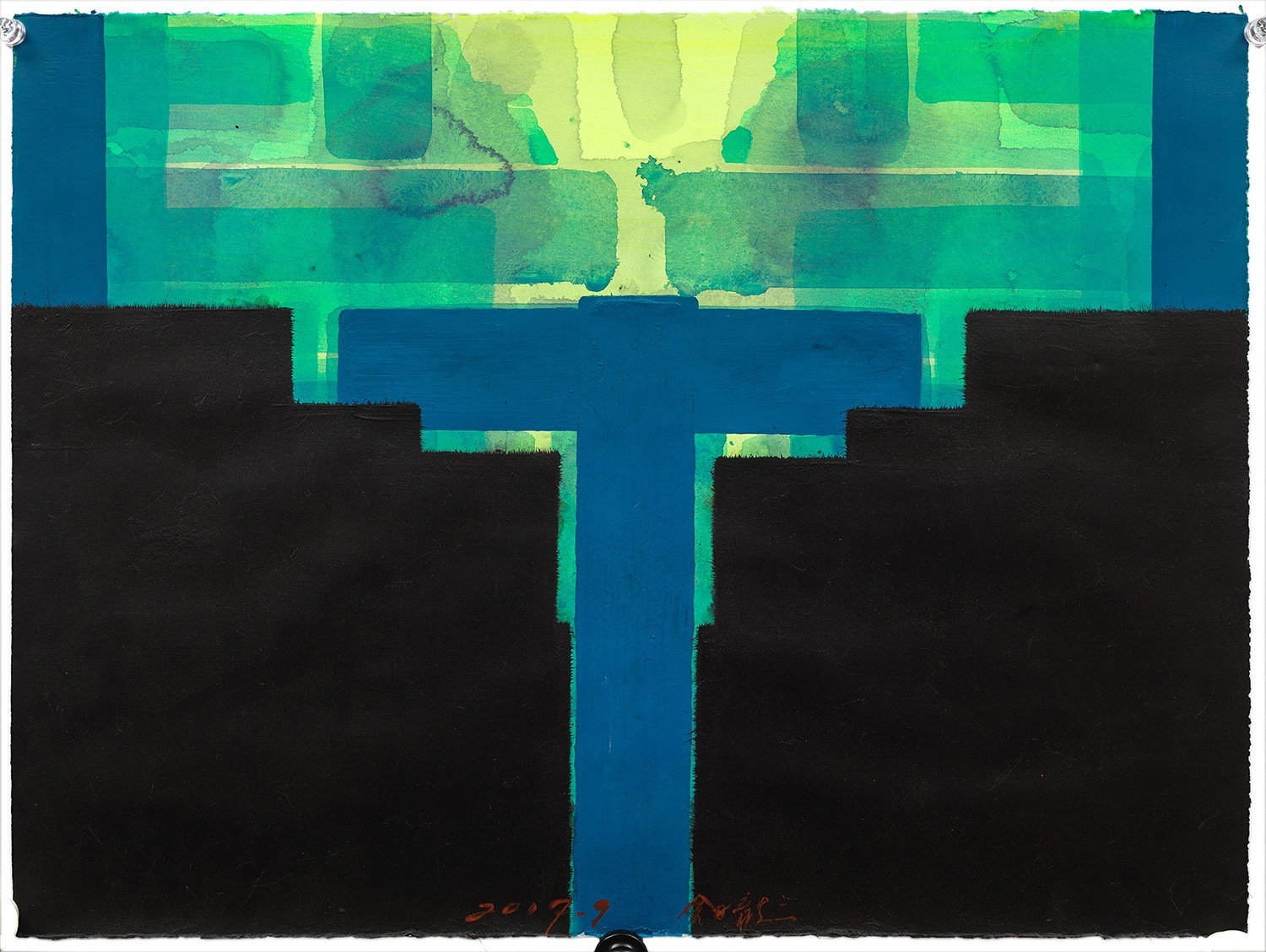
Jin Rilong, Mind, Acrylic on paper, 58×76cm, 2017
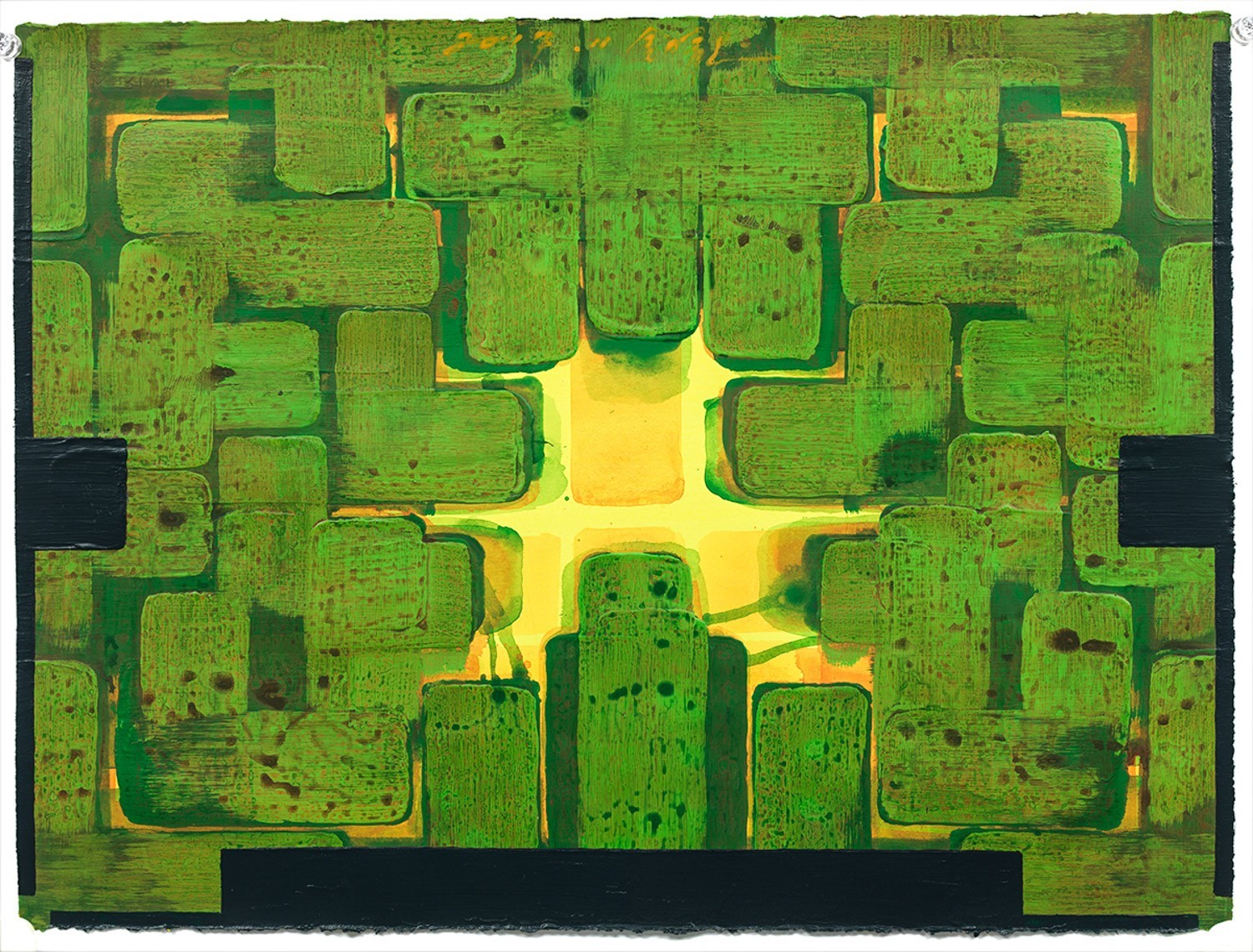
Jin Rilong, Practice 5, Acrylic on paper, 57×76 cm, 2017
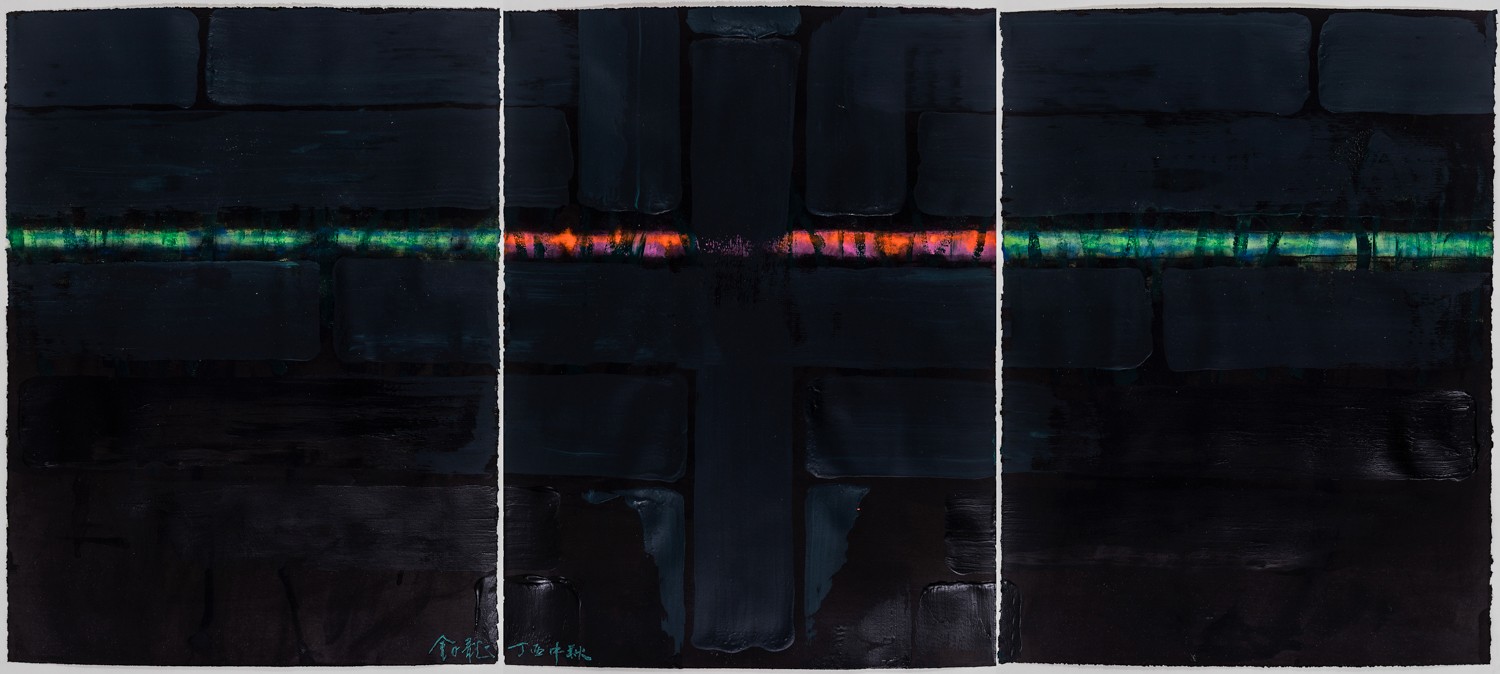
Jin Rilong, Ding You Mid-Autumn Festival 4, Acrylic on paper, 76×174cm, 2017
The works in the “Seeing the Image of Mind ” section were created in 2016-2017. The artist was summoned by his alma mater to return to China as the Deputy Dean of the School of Design, Central Academy of Fine Arts. After ten years of teaching and creating design subjects and video art, he turned to abstract art creation again. Although topics such as “Mind”, “Practice”, “Original Aspiration” and “Ding You Mid-Autumn Festival” are still inspiring, there is no trace of concrete associations from the images. At this stage, Jin Rilong continued to follow his inner call and finally turned to an exploration of his inner world.

Jin Rilong, East, Acrylic on paper, 76×348cm, 2018

Jin Rilong, West, Acrylic on paper, 76×348cm, 2018
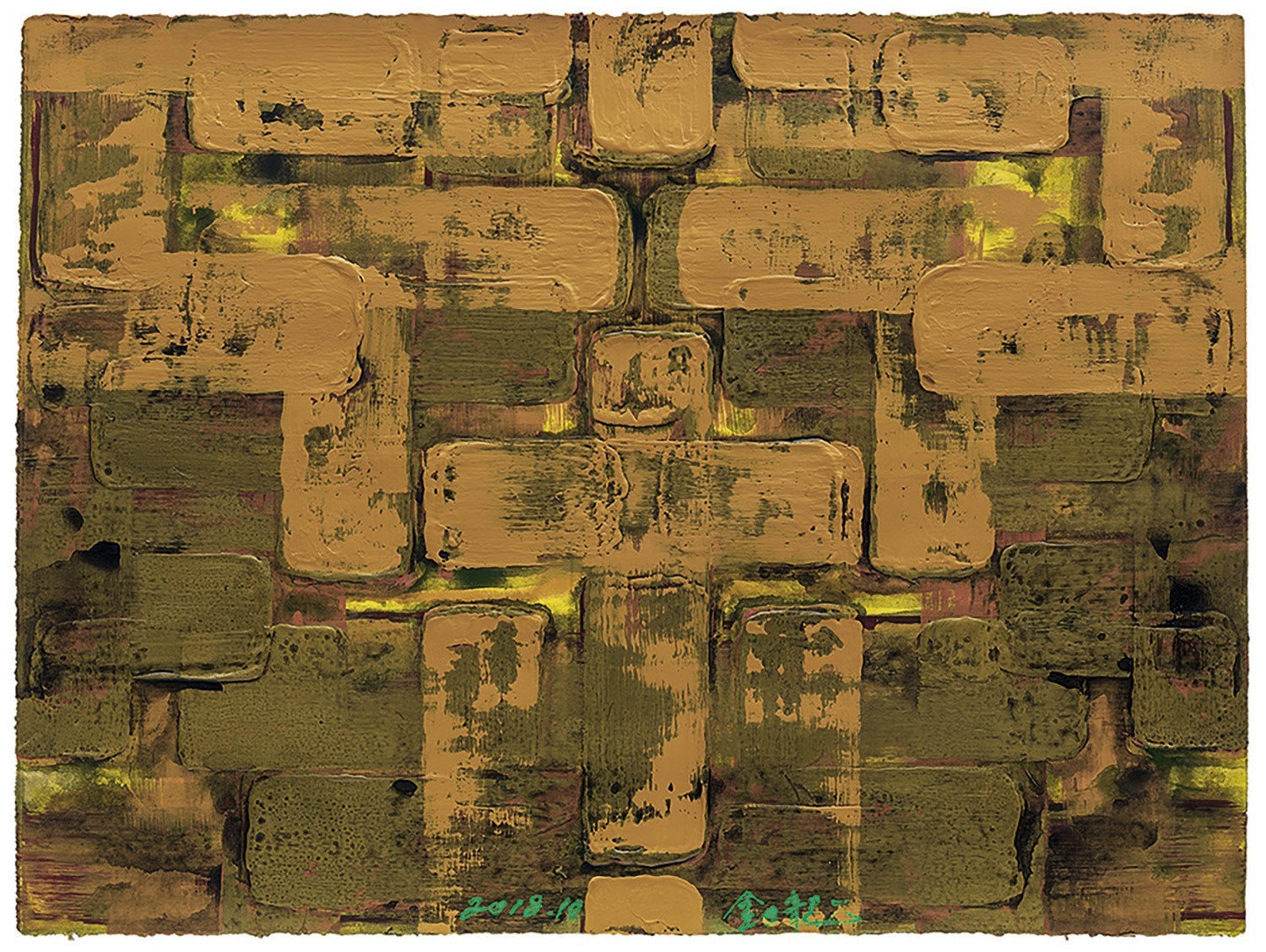
Jin Rilong, Inside, Acrylic on paper, 58×76cm, 2018
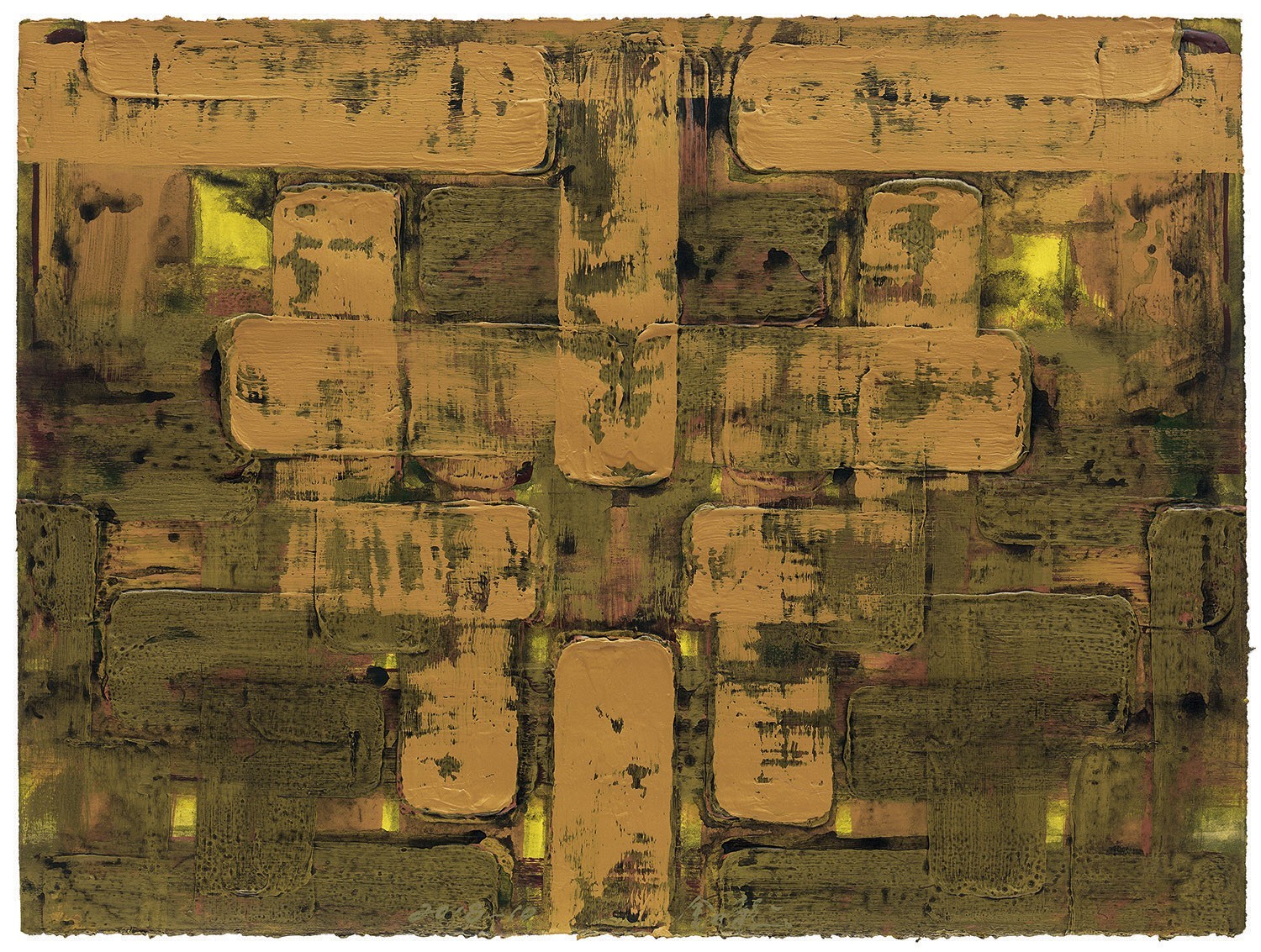
Jin Rilong, Outside, Acrylic on paper, 58×76cm, 2018The works in the “Reconstructing the Image” section continue his exploration of the previous stage. The difference is that at this stage, the style of work gradually becomes clear, the language and pictures tend to be simple, the artist’s warm mood tends to calm and the classic icon of T-shape and the cross-shaped structures often appear. The “Blessings” series and the “Lotus Pond” series regain the expressive power of lines, but the lines at this time are more subject to a form of rational calmness and order. Although “East”, “West”, “Inside”, “Outside” and other works retain a strong spirituality, the mystery and passion are reduced. The courage and determination to reconstruct the image endow his works with contemplation and it’s closer to a sensible historical observation, rather than the burning passion in it.
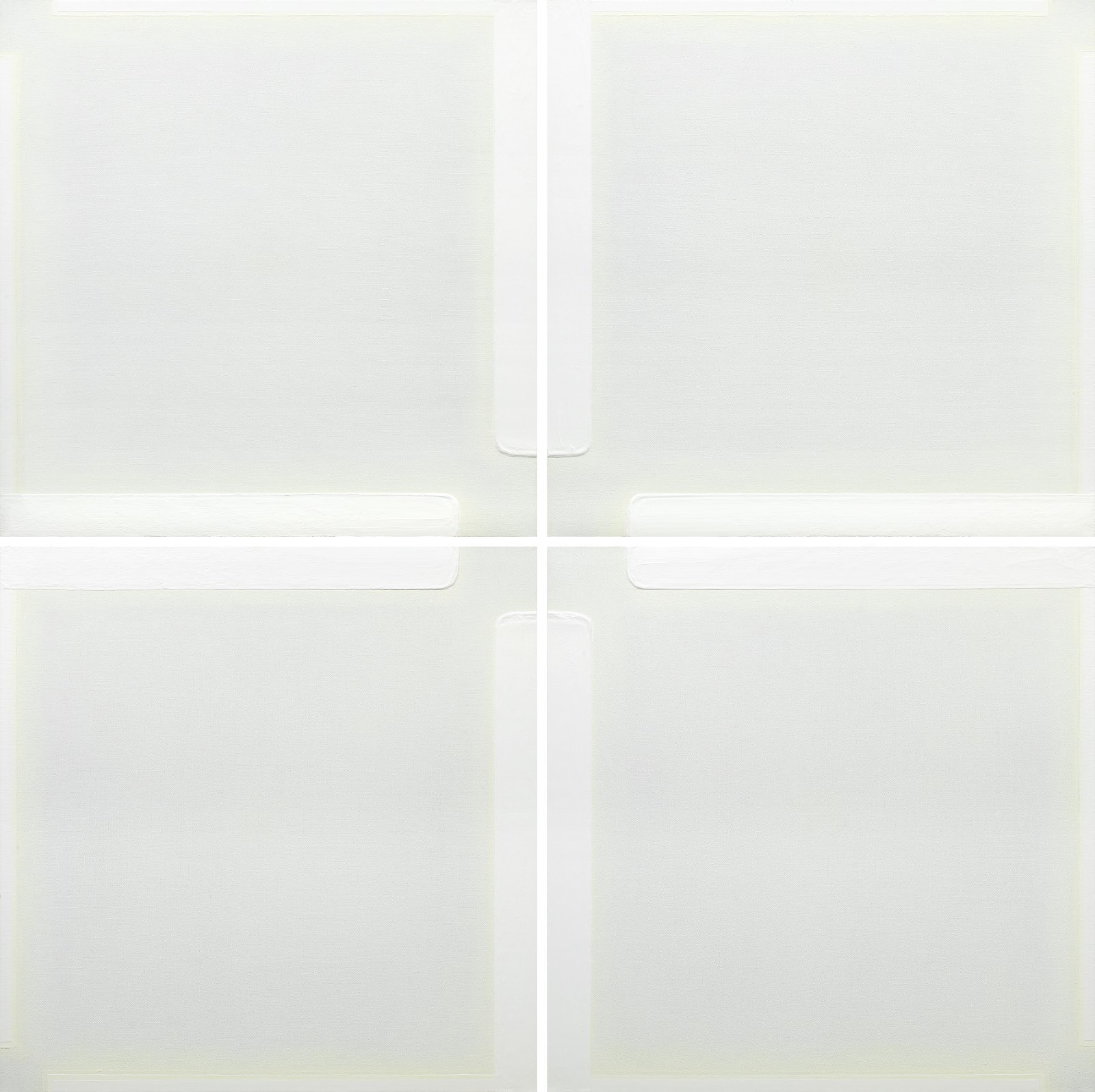
Jin Rilong, Self-Restraint I, Acrylic on paper, 300×300cm, 2020
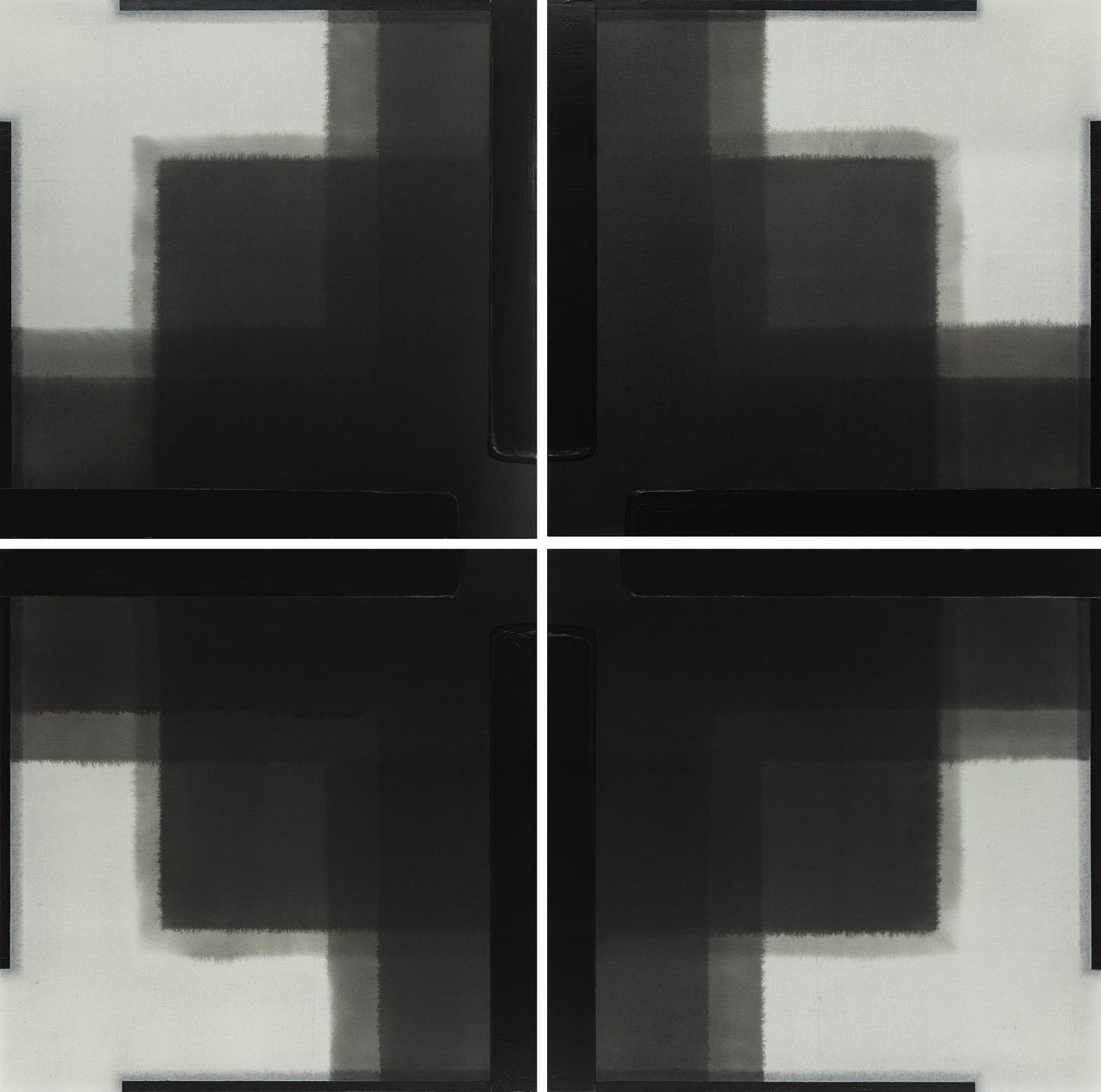
Jin Rilong, Self-Restraint II, Acrylic on paper, 300×300cm, 2020
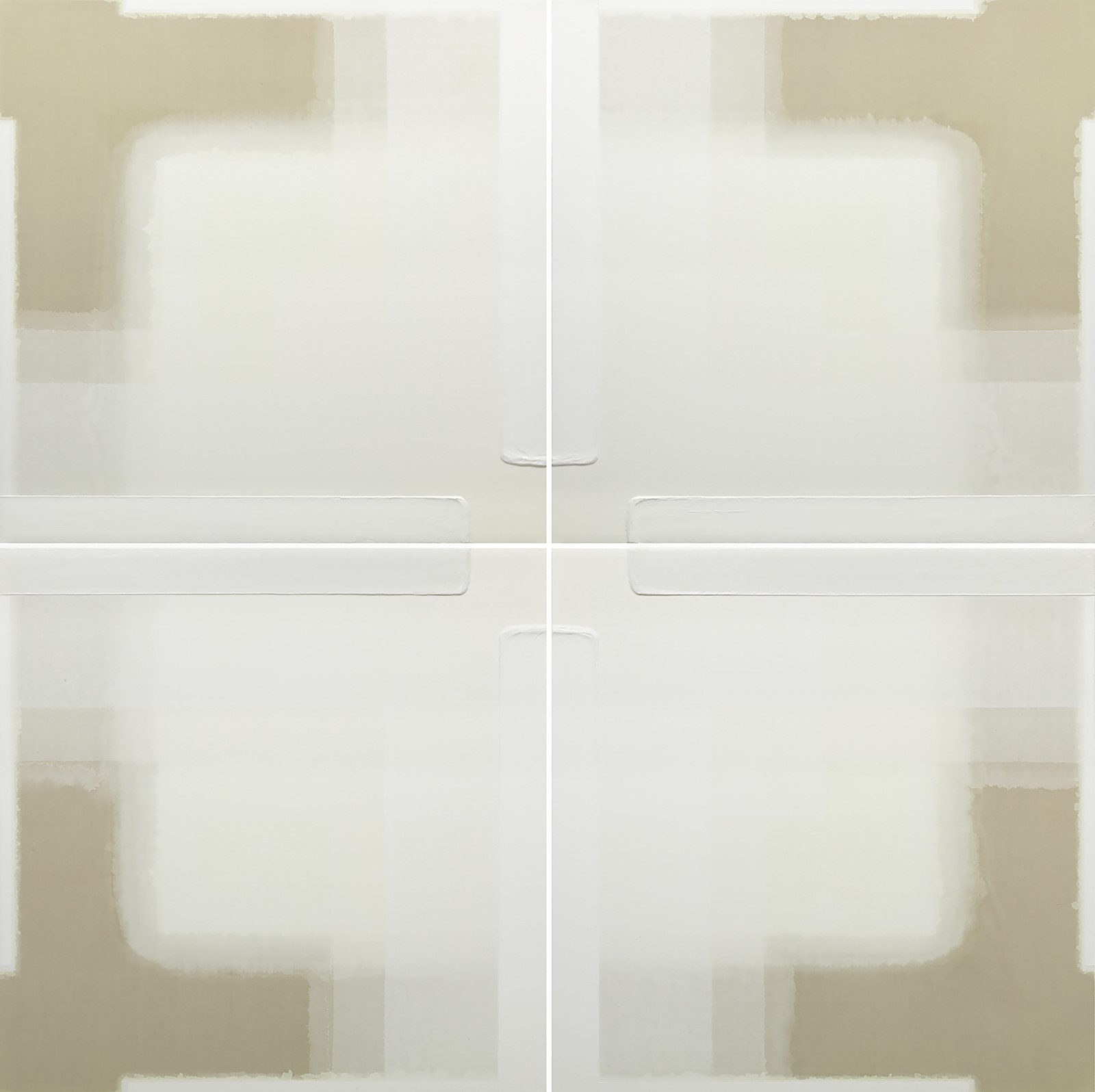
Jin Rilong, Self-Restraint III, Acrylic on canvas, 300×300cm, 2020
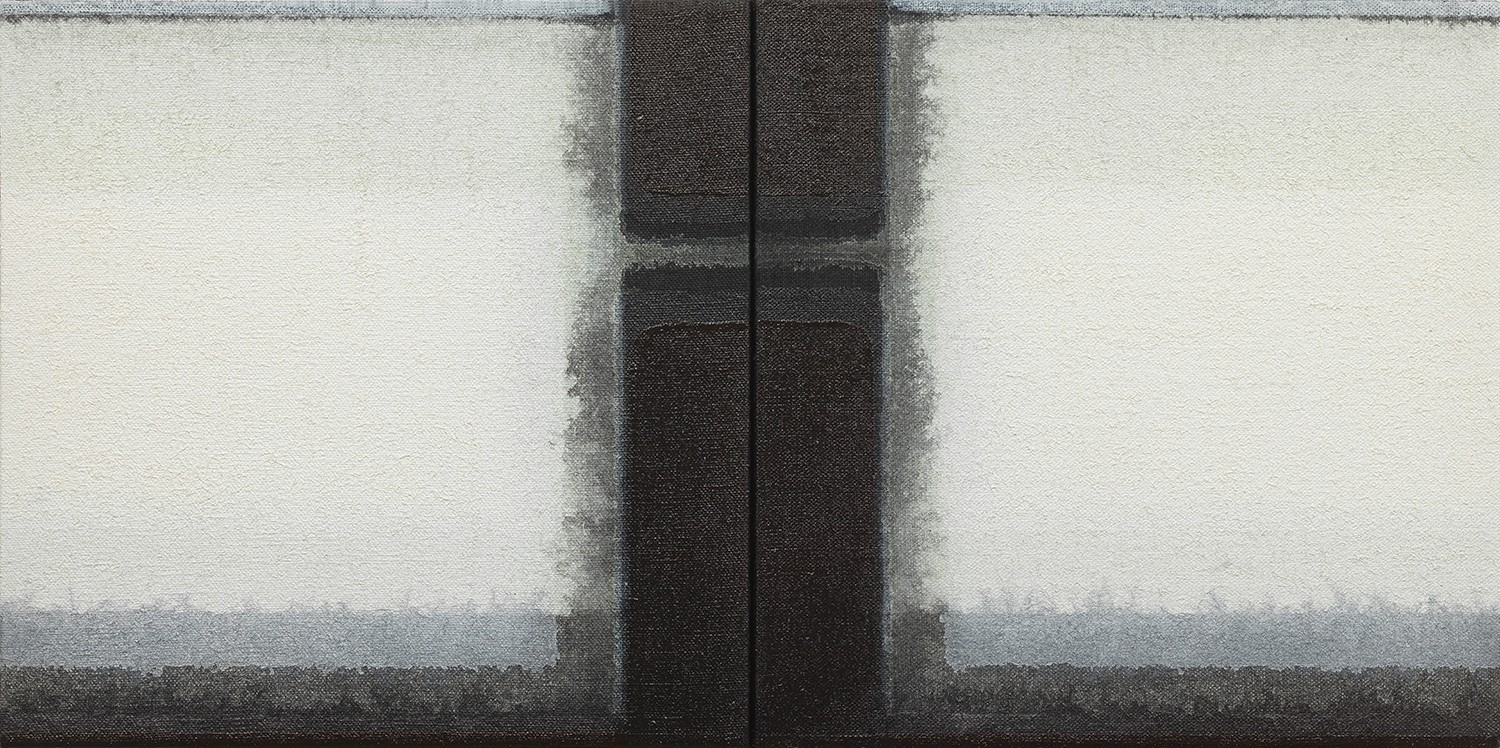
Jin Rilong, Self-Restraint IV, Acrylic on canvas, 50×100cm, 2020
From 2019 to 2020, Jin Rilong’s works have formed a phased, stable and mature appearance, that is, the main combination of quadruplets, forming a complex combination of iconic cross patterns and T-shaped icons. It can be seen from the section of “Self-restraint Horizon” that in the works of this period, Jin Rilong organically blends strong spirituality, objective reason and subjective emotions. The tension between them is no longer a game caused by contradictory factors, but a delicate balance that has been reached. External order and internal passion, these two contradictory factors that run through Jin Rilong’s entire abstract art exploration have now shaken hands and reconciled. The strong spirituality and the artist’s subjective emotions have transformed into a warm gentleman’s style, while objective rationality has become this gentle internal organic framework, which is infinitely harmonious with each other and together supports Jin Rilong’s unique “Self-restraint Horizon”.
Fan Di’an, Chairman of the China Artists Association and President of the Central Academy of Fine Arts, pointed out that Professor Jin Rilong’s art has two major characteristics: First, his research on the laws of visual modeling is constantly oriented towards depth; in a wide range of expressions, he always pays attention to the study of art forms, especially form structure, with deep regard for “composition” as the subject of his exploration, and has tried a variety of media, which not only touches the different properties of materials, makes them a carrier of feelings, and pays more attention to the expression of drawings. This technique combines perceptual sway with rational control; the second is that his pursuit of artistic quality is constantly moving towards a sense of an in-depth quality. He knows that abstract painting is not just a passionate sway, but a concentration, purification and sublimation towards the spirit in a free state, which is to achieve the height of character, taste and quality in the process of drawing. Because of his rich experience in realistic modeling, after turning to abstract expression, he did not only pay attention to the gracefulness and lucidity of the picture structure, but he also focused on the pure and advanced colors of the picture, especially the relationship between the brightness of the color and the ratio of gray tones that form an elegant style. This pursuit of quality is exactly the goal of Jin Rilong in art, which reflects the spiritual belonging and conscious pursuit of an academy artist.
Regarding Jin Rilong’s artistic methodology, Fan Di’an believes that it is quite compatible with the concept of “generation” in the Chinese art tradition. On the one hand, he uses the vitality of expressing “shape” as the breakthrough point, and constructs abstraction in the unconscious flow of brush lines while the structure creates vigorous vitality. On the other hand, he is also moving towards peace of mind in the meditation of the painting process. In a large number of “cross-shaped structures and paintings, he has constructed an overall stable and detailed spiritual symbolic world and each painting has its own tone.
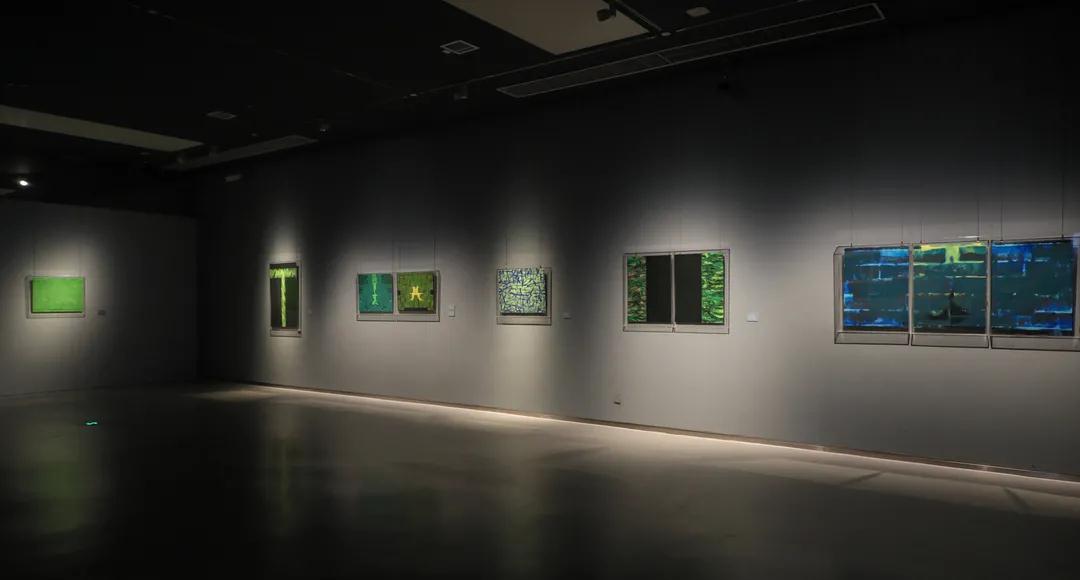
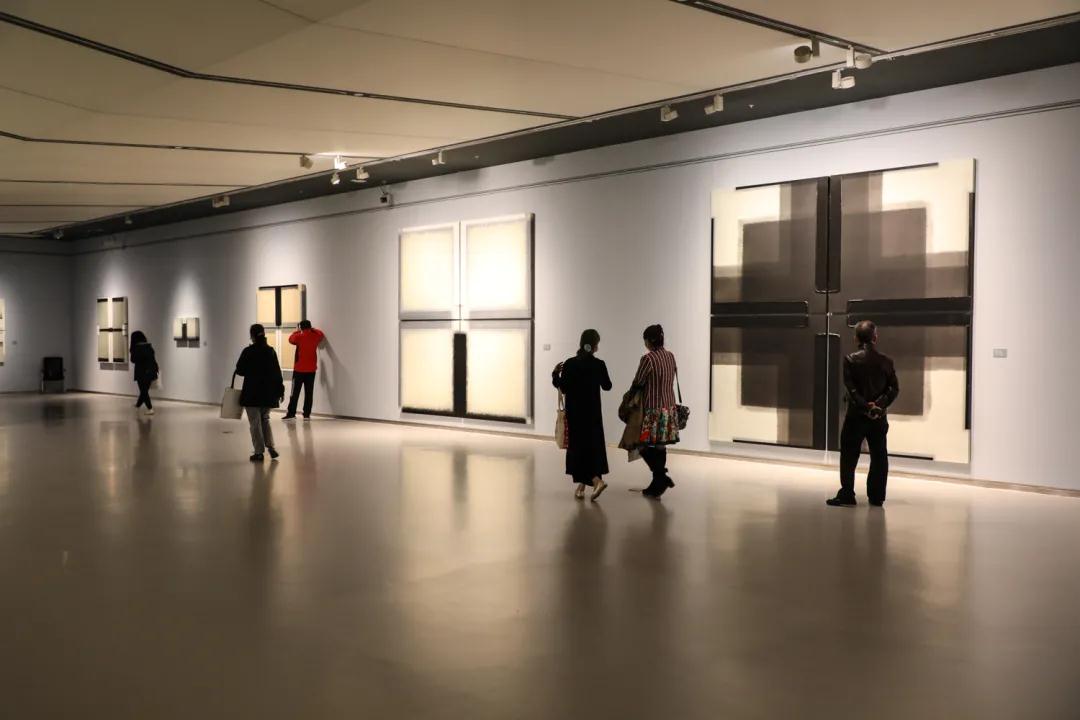
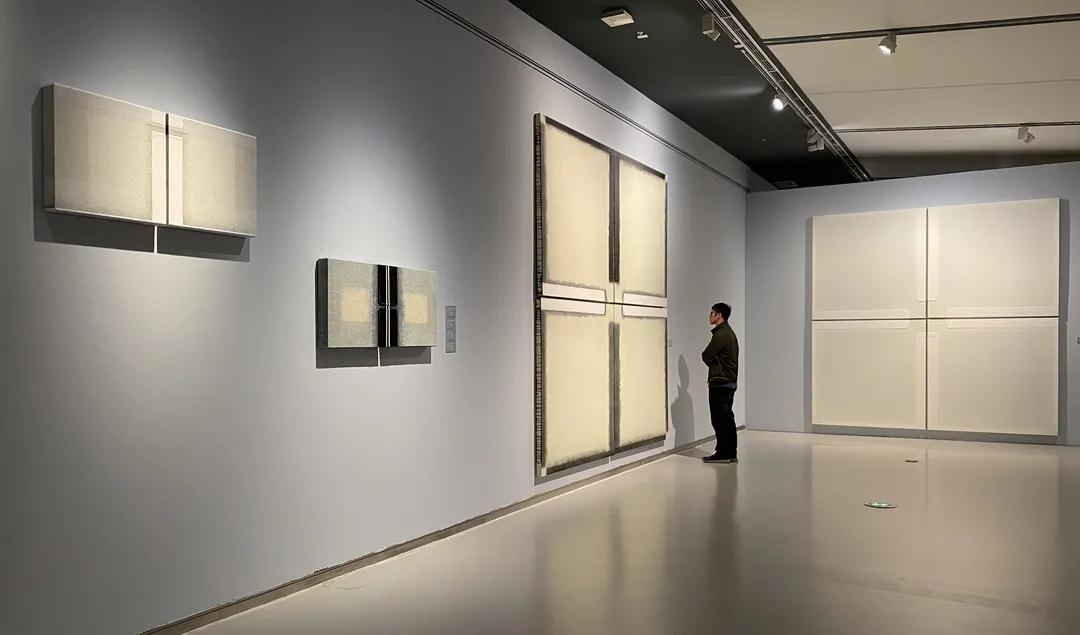
Exhibition View of “SELF-RESTRAINT & HORIZON: Twenty Years of Jin Rilong’s Abstract Art”
Hongmei, Curator of this exhibition, believes that “regardless of subjective wishes, Chinese contemporary abstract art is potentially facing two traditions: one is the Western modernist tradition with abstract expressionism as its ultimate goal. In this tradition, purification of artistic languages has become the driving force behind the evolution of art, which is to use artistic language itself as an aesthetic object, thus pursuing its own extreme expressiveness, as well as the unconsciousness and automatism of the artist’s creation. The other is the developing history of abstract art in China since the early 1980s. Because of the lack of the traditional context and realistic environment for the development of abstract art, coupled with the increasing commercialization and daily life of Chinese oil painting art since the 1990s, abstract art in China has shown a pure artistic spirit. This spirit has a certain sense of elite culture because abstract art is ignored by the market and criticism.” She said that insisting on elite art is also one of Jin Rilong’s starting points. Moreover, because Jin Rilong pursues the expressive power of artistic language such as color, space and brushstrokes, he also devotes himself to the expressions of form and structure of the picture and his own emotions, Jin Rilong’s abstract art cannot be simply incorporated into the above two systems. Therefore, Jin Rilong has made his own unique contribution to the exploration of abstract art.
The academic seminar was held at the Shandong Art Museum after the opening ceremony. Many honored guests from the Central Academy of Fine Arts, Shandong Art Museum, Shandong University of Arts, Shandong Artists Association and other institutes discussed the source, style, new appearance and inspiration of Jin Rilong’s abstract art.
The guests attending the seminar included Fan Di’an, Chairman of the China Artists Association and President of Central Academy of Fine Arts, Zhang Wang, Chairman of the Shandong Artists Association and Director of Shandong Art Museum, Wang Like, Director of the Shandong University of Arts, Prof. Zhang Zikang, Director of CAFA Art Museum, Professor Yin Shuangxi from Central Academy of Fine Arts, Professor Zhang Lujiang, Director of the Oil Painting Department at the Central Academy of Fine Arts, Professor Meng Luding, from the Fifth Studio of the Oil Painting Department of the Central Academy of Fine Arts, Professor Zhao Li, Deputy Dean from the School of Arts Administration and Education, Central Academy of Fine Arts, Ge Yujun, Secretary of the Party Branch and Associate Professor of the Graduate School of Central Academy of Fine Arts, Sun Lei, Deputy Dean of the School of Fine Arts of Shandong University of Arts, Fu Yijing, Director and Associate Researcher of the Personnel Department of the Central Academy of Fine Arts, Liu Libin, Researcher of the Research Office at the Central Academy of Fine Arts, Professor Yu Yang from the National Themed Art Creation Center at Central Academy of Fine Arts, Zhou Bo, Associate Professor from School of Design at Central Academy of Fine Arts, Zheng Gang, Executive Editor-in-Chief of Shandong Fine Arts and Deputy Director of the Theoretical Art Committee of Shandong Artists Association, Professor Jin Rilong from the Department of Oil Painting at Central Academy of Fine Arts as well as Hongmei, Associate Professor and Director of the Theoretical Publishing Department of CAFA Art Museum. This seminar was hosted by Professor Yu Ding, Dean and Professor from the School of Arts Management and Education, Central Academy of Fine Arts.
Text by Zhu Li and Yang Zhonghui, translated by Sue/CAFA ART INFO
Photo Courtesy of the Organizer.
You may also visit the VR online exhibition by clicking https://720yun.com/t/0bvkOb7m52h?scene_id=58311051.


